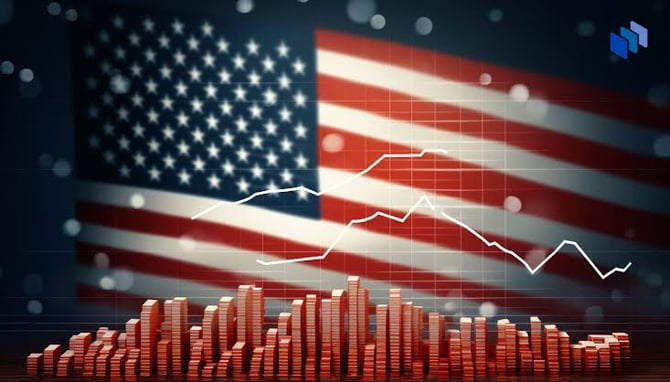Key U.S. Inflation Measure Affects Economic Outlook

The U.S. Personal Consumption Expenditures (PCE) price index, excluding food and energy, rose by 0.4% in February, aligning with predictions and marking a 2.8% year-over-year increase. Overall, the broader PCE index increased by 0.3% month-over-month and 2.4% on an annual basis, reflecting a shift towards services as the economy seeks equilibrium after pandemic-induced disruptions.
Spending on services went up by 0.6% in just a month. Annually, service prices surged by 3.9%, against a 0.5% decrease in goods prices. Despite fluctuations in food and energy costs, with food prices climbing by 0.5% and energy prices dropping by 1.4%, inflation metrics continue to exceed the Fed's 2% target.
Personal income saw a surprising jump of 1%, suggesting increased earnings. Despite this, reduced overall consumer spending suggests cautious consumer behavior amid rising prices. Labor market reports complemented these findings, indicating a continued aversion to layoffs, with initial jobless claims reaching 215,000.
What Does This Mean for Me?
The Federal Reserve's future policy direction is under scrutiny, especially after a series of interest rate hikes aimed at tempering inflation. With the central bank raising rates by a total of 5.25 percentage points since March 2022, the ongoing debate focuses on the potential for policy easing, though the timing and magnitude remain uncertain.
This cautious approach is influenced by persistent inflationary pressures, despite some attributing recent price increases to seasonal adjustments and temporary factors. The comprehensive nature of the PCE index, factoring in consumer behavior changes in response to price shifts, offers a nuanced view of inflationary trends, crucial for future monetary policy considerations.
More News
.webp)
Japan’s Rate Shift Is Rippling Through Global Bond Markets
1 week ago

China’s Growth Engine Stalls as Consumers and Investors Pull Back
2 weeks ago

Egypt’s Recovery Gains Traction as Household Pressure Lingers
3 weeks ago

OECD Warns AI and Tariffs Will Test the Global Economy
3 weeks ago

Zero Tariffs, Higher Drug Bills as US and UK Reset Pharma Trade
4 weeks ago

Catastrophe Bonds Go Global as Climate Risk Meets Yield Hunting
1 month ago
.webp)
Canada Shields Steel and Lumber Industries From Tariffs
1 month ago

Trump Drops Selected Tariffs in Response to Inflation Pressures
1 month ago